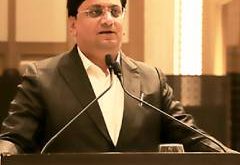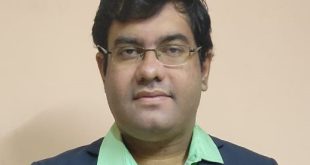With buying patterns going increasingly towards the mobile and social networks taking over all kinds of business operations, it is time for a long hard look at how enterprises work. SAP has a good basket of products that address the issues of the changing business dynamics. Sriram Kanuri, CEO of Arteria Technologies, feels that going forward the new markets that nee dto be tapped are education and gaming. Big Data is one are to focus on, and SAP has a platform for all these plans.
What trends have you seen in the last two years with respect to adoption of SAP technologies?
In the last two years, the technology adoption from SAP has been predominantly around cloud and HANA (or big data, as we call it). SAP has acquired few companies in supply chain and HR solutions; and solutions from these companies are being adopted by our new and existing customers. Apart from this, trends in big data and analytics are addressed by SAP’s flagship product HANA, which is gaining ground in the last couple of years. These are the trends around which the SAP ecosystem of its partners and end -customers is adopting.
How has the current connected enterprise concept impacted IT support? How is Arteria addressing this?
Omnipresence or mobile-first approach is impacting employee behavior, including sales people, the customers, as well as dealers and suppliers. In the last couple of years, the biggest trend has been that buying patterns have gone a lot more digital than earlier. People respond via social networks and also get influenced by social networks. From an SAP point of view, both, the company and us, Arteria, have been responsive to this trend.
Our supply chain products, trade finance products, and education products have social networking included. Also, we are in touch with our customer’s customers so as to give our immediate customers feedback on the latest trends that could impact their business.
What are the key tools or technologies to address the connected enterprise?
The cloud platform is built on the HANA suite, and we are one of the first SAP partners globally to have to the HANA platform. We use the necessary adapters that HANA provides, to ensure that our products are up to date with the trends in the market.
What are the trends around the NetWeaver platform? Do you seen any competition happening here?
As one of SAP’s premier technology partners, we have been adopting their process management tools, cloud platform and big data tools. NetWeaver BPM being their (SAP’s) premier tools for business process management, embeds very well into all of our products, because our products are built and certified for this particular tool. This ensures we have a process that seamlessly integrates from SAP to non-SAP to customer developed solutions to systems which are still silos.
The market for BPM tools was always hot, but with the current scenario where there’s cloud deployment, on-premise deployment, and with social networks playing a role, BPM is set to play a much bigger role in the coming years if an enterprise is to work in a connected manner. Speaking about competition – SAP’s biggest strength is its huge existing corporate customer base, something we benefit from, as well.
What products from Arteria address the IT management needs?
Over the last few years, we have made multiple products to address various customer needs. The focus has always been to address both, the upstream and downstream of supply chain. We have products for our customers that address processes related to their suppliers as well as their dealers, distributors and secondary sales chain. We use cloud and on-premise models of SAP to deploy these solutions.
Since last year we have started focusing on education, as a market, for which we provide student life-cycle management solution, which fills the gap in SAP’s solution to cater to every aspect – from admission process to alumni network management. From digitally signed and leak-proof question papers and delivering score sheets digitally, we have covered the needs of colleges end-to-end.
What major technology trends do you forecast for the next couple of years?
A further increase in the adoption of cloud is one trend we will see in the next two years. Big data is another area set to grow – there are lot of real world use cases that are already underway. For example, we have built a flood forecasting system using SAP’s big data technologies. We have built a system that takes in data from various sensors along rivers, weather maps and historical data, and mapped it on Google Maps. This solution has an accuracy of about 83%.
On a different note, a trend that I see is that gamification. Training has moved to gaming as a platform. We might even see traditional ERP screens being replaced by a gaming inspired dashboard, if not in the next two years, perhaps in the next three to five years. Most customers complain that their ERP’s UI is not friendly, so there is scope to ease that.
How is your roadmap aligned to SAP’s new products?
SAP is planning to launch products around cloud and big data. We are included in their application development teams – in fact, we are an SAP application development partner. We are one of the first partners globally to move their service offerings on SAP’s new platforms. We play the role of pilots for the new platforms. This helps our business in a big way.
In developing economics, there is a perception that SAP products are expensive, but the new cloud based models will help bring costs down.
What industries are you focusing on now?
We focus on industries that have heavy dependencies on their supply chain and distribution side. Therefore our focus verticals would cover FMCG / CPG, and also large oil companies that have vast distribution networks.
Our two new markets include education and healthcare. Our products plug the gaps in out-of-the-box solutions. These are sunrise sectors and there is a lot to be done here.
 Latest Technology News Today – Get Latest Information Technology Updates and Services Latest Technology News Today – Get Latest Information Technology Updates and Services
Latest Technology News Today – Get Latest Information Technology Updates and Services Latest Technology News Today – Get Latest Information Technology Updates and Services 









